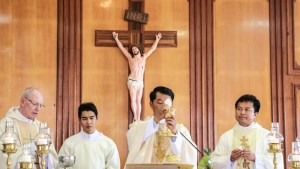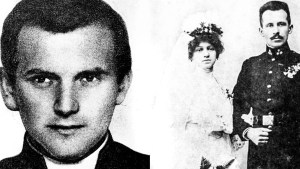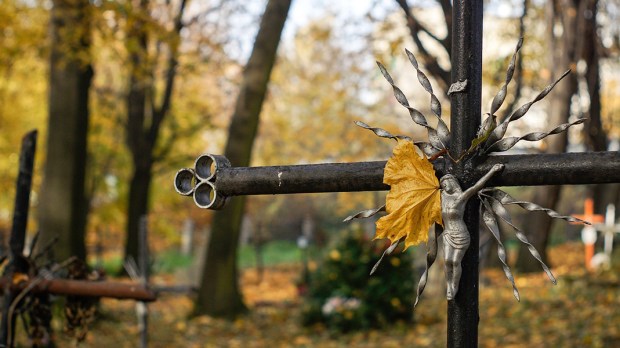While All Souls Day dates back to the 10th century, one major aspect of its celebration was introduced during World War I.
According to Fr. William Saunders in an article for Catholic Exchange, “During World War I, Pope Benedict XV, recognizing the number of [casualties] and the numerous Masses that could not be fulfilled because of destroyed Churches, granted all priests the privilege of offering three Masses on All Souls Day: one for the particular intention, one for all of the faithful departed and one for the intentions of the Holy Father.”

Read more:
What are Mass intentions and why do Catholics pay for them?
Horrors of war
Pope Benedict XV made this change on August 10, 1915, in a papal bull entitled Incruentum altaris. This was shortly after Italy declared war on Austria-Hungary and after the first Zeppelin raid on London. It was early on in the war, but already there were many casualties and there was no end in sight. Looking forward to November 2, Benedict XV knew he had to do something to pray for all the newly deceased.
Mercy touches us today in a greater way when, because of the very terrible fires of war that have lit up in almost all of Europe, we have before Our eyes so much youth that dies prematurely in battle. Even if the mercy of their relatives to support their souls will not fail, yet will it be enough to provide for their needs? Since, by divine will, we have become the common Father of all, therefore, invoking the light of heavenly Wisdom, after consulting … members of the Sacred Congregations on the discipline of the Sacraments and of the Sacred Rites, we establish in perpetuity the following:
On the day of the solemn commemoration of all the faithful departed, throughout the Church it is permissible for priests to celebrate three Masses, on condition that one of the three be applied freely … the second Mass … is dedicated to all the faithful departed; the third is to be celebrated according to the intention of the Supreme Pontiff, as stated above.
Another one of the reasons why Benedict XV wanted to establish this tradition was to reignite among the faithful the desire to pray for the holy souls in purgatory. Prior to this he had seen fewer and fewer Masses offered for these suffering souls and hoped priests would respond to the call and help these souls in need.
As the Catechism of the Catholic Chuch explains, “[E]very sin, even venial, entails an unhealthy attachment to creatures, which must be purified either here on earth, or after death in the state called Purgatory” (CCC 1472). It is believed that our prayers here on earth, especially through the most perfect prayer of the Mass, can help shorten that time spent in purgatory and give spiritual aid to those souls. It is one of the many mysteries of the Catholic Church, confirmed in the teachings of Jesus and other places of the Bible.
What Benedict XV allowed in 1915 remains in effect today, and this is why in some parishes you will see three separate Masses celebrated on November 2.
Read more:
What is purgatory?

Read more:
St. John Paul II’s first 3 Masses were for his mom, dad and brother on All Souls Day

